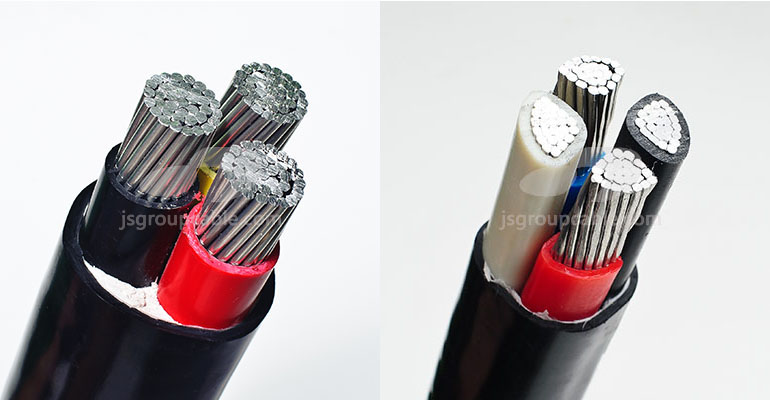- Offices Time:24 Hours Online
- Email:[email protected]
- WhatsApp:+8618339938759

Posted on November 3, 2022
Types and laying methods of low-voltage cables
What are the specifications of low-voltage cables? Before understanding the model specifications of low-voltage cables, we must first understand low-voltage cables. Low-voltage cable refers to: 0.6-1KV cable. The specifications and models of low-voltage cables are: VV, YJV, VV22, YJV22, YQ/YZ/YC, BTTZ/YTTW.
1.The specifications of these low-voltage cables
VV: PVC insulated PVC sheathed copper core power cable
YJV: XLPE insulated PVC sheathed copper core power cable
VV22: Copper core PVC insulated inner steel tape armored PVC sheathed power cable
YJV22: Copper core cross-linked insulation inner steel tape armored PVC sheathed power cable
YQ/YZ/YC: Universal rubber sheathed flexible cable
BTTZ/YTTW: Rigid (flexible) copper core copper sheathed magnesium oxide mineral insulated fireproof cable
2.Insulation of low voltage cables
Low-voltage power cables have wire and cable insulation materials with specific functions of withstand voltage.There are two types of insulation layers: core insulation and tape insulation. The insulation wrapped in the core is called core insulation, and the insulation that combines the insulated cores of a multi-core cable and then wraps it is called tape insulation. The tape insulation is isolated from the protective layer to form reliable ground insulation. The insulating layer is usually made of oil-impregnated paper, plastic, rubber, etc.
(1) The paper insulated cable is a cable with the impregnated cable paper as the insulating layer, which is collectively referred to as the paper insulated cable. According to the condition of paper impregnation, oil-impregnated paper insulated cables, dry insulated cables and cables do not sag.
(2) Cables formed by crushing the insulating layer with thermoplastics and then cross-linking, collectively referred to as plastic cables, are widely used. There are three types of plastic cables: PVC cables, polyethylene cables and XLPE cables. Cables that use natural styrene-butadiene rubber, butyl rubber, ethylene-propylene rubber and other materials for the insulating layer are called rubber cables. Low-voltage cables with a voltage level of 1kV can use paper-insulated cables and plastic cables, mostly plastic cables, and low-voltage cables with a voltage level of 0.5 kV mostly use rubber cables
3.Common laying methods of low-voltage cable lines
① Buried directly
② Lay in the cable trench
③ laying along the wall
④ Lay in cable tunnels, etc.
Cables are used to transmit electrical or signal current and signal voltage conductors, covering insulating layers, protective layers, shielding layers, etc. According to the voltage, it can be divided into two categories: high and low voltage cables. Low-voltage Power Cable lines are mainly used in places with high requirements for power supply reliability, corrosive gases, flammable, explosive and other places where low-voltage overhead lines or low-voltage overhead insulated lines are not suitable.

4.The common laying methods of low-voltage cables include direct buried laying, cable trench laying, tunnel laying and wall laying.
(1) Directly buried laying. When the number of cables laid along the same path is not more than 8, direct buried laying shall be adopted as far as possible. The burial depth should not be less than 700 mm, and it should not be less than 1 m when crossing the farmland, and 100 mm thick fine sand or soft soil should be evenly laid above and below the cable, and then covered with a concrete protection board. The clear distance between the directly buried cables and the parallel or crossing of various facilities shall not be less than the value in Table 1. Cables should be protected by pipes when passing through buildings, railways, roads, etc. Direct buried laying is convenient for construction, cost saving and good heat dissipation. The disadvantage is that the cable maintenance is inconvenient, cannot reliably prevent external mechanical damage, and is susceptible to corrosion. Direct buried laying is suitable for occasions where the number of cables is small and the laying path is long.
(2) Cable trench laying. Cable trenches are divided into indoor cable trenches, cable trenches in low-voltage power distribution devices, and general outdoor cable trenches. The cover plate of the indoor cable trench is laid flat with the ground. The cover plate of the cable trench of the inner line of the outdoor power distribution device should be higher than the ground and double as an operation aisle. Generally, in order not to hinder the drainage of outdoor cable trenches, the cover should be generally 0.3m below the ground, and sand or crushed soil should be laid on it. The investment in cable trench laying is less than that of cable tunnel and pipe laying. It is more convenient to repair and replace cables, occupy a small area, and route wiring is easy and flexible. When there are 18 cables, it is generally advisable to use cable trenches for laying.
Jinshui Wire&Cable Group is a professional wire and cable manufacturer, providing customers with various types of low-voltage cables, and providing customers with a good after-sales service system.
Post categories
Most Popular Posts
-
The 136th Canton Fair welcomes you to participate!
October 12, 2024 -
High temperature cable introduction
July 26, 2024 -
Kenya Power and Energy Exhibition 2024
June 11, 2024 -
Introduction of rubber sheathed cable
June 5, 2024





